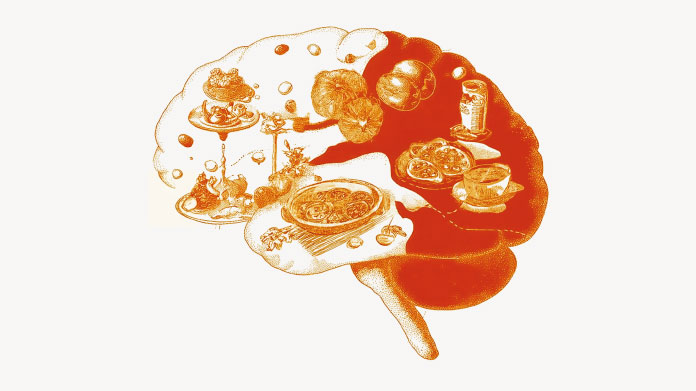Food-combining diet: principles, benefits and practical advice
Many people are attracted to the idea of food-combining. Based on avoiding certain food combinations, it may produce rapid and sustainable weight loss. Here we evaluate this diet and provide tips on how to follow it safely.

Food-combining diet: history and key principles
The principles of this diet are to be found in Ayurveda, the traditional Indian system of medicine. It was first taken up in the United States at the beginning of the 20th century. Dr William Howard Hay formalised the diet’s main rules, and Dr Herbert Shelton subsequently offered a more detailed insight in his 1951 book ‘Food Combining Made Easy’ (1).
The food-combining diet is based on two key principles:
- different foods are not all absorbed by the body at the same rate: combining certain foods may complicate the digestive process;
- foods are digested with the help of gastric enzymes: in order to function optimally, they need an environment with a specific pH. Combining foods which have different effects on acidity makes it harder for the body to absorb them.
Benefits of the food-combining approach
Adopting the food-combining diet may thus enhance the digestive process, and limit any unpleasant effects thereof. This may also reduce harmful putrefaction of foods in the stomach. In addition, by reducing the amount of effort expended on digesting food, the body may be able to devote more time to other natural functions.
Proponents of the diet believe it also facilitates rapid weight loss, producing a noticeable feeling of lightness and a significant increase in energy (2).
By excluding bad food combinations, the diet may prevent the release of potential disease-causingtoxins in the body. According to this theory, a number of health problems could be avoided by following the principles set out by Drs Hay and Shelton.
Food-combining in practice
How do you apply this diet on a daily basis? A number of basic principles need to be observed:
- Do not combine carbohydrates with animal protein in the same meal. Digesting protein makes it much harder to digest starch. For the Western consumer, this means giving up some well-established dietary practices. No more pasta shells with ham, or sausage and mash!
- Only eat fruit on an empty stomach, and above all, do not eat it at the end of a meal. The simple sugars in fruit are digested less efficiently when the body has already devoted its resources towards digesting other elements such as protein.
- Do not consume starches with foods that increase acidity, such as dairy foods, condiments, spinach, citrus fruit … Saliva plays a key role in the digestion of complex carbohydrates such as pasta, rice and potatoes, and this digestion works at its best in a pH neutral environment.
- Dairy products should only be consumed by themselves, or possibly with fruit and vegetables. This means not eating bread and cheese together.
- Take the time to digest properly between each meal. Leave at least four hours after a meal containing protein, and at least seven hours after a high-fat meal.
These principles can be applied on a daily basis by, for example, choosing one type of food for each meal. Some people even prefer to concentrate on one food type for each day of the week.
Potential options for food-combining over a day
- breakfast: fruit;
- lunch: grains (starches, pulses) ;
- dinner: meat or fish, with some vegetables.
In what circumstances might it be a good idea to adopt the food-combining diet?
There are several situations conducive to following the food-combining diet for a short period.
Extreme fatigue
This diet can provide an energy boost by enabling less energy to be expended on the digestive process.
If you think your low energy levels might be due to a nutritional deficiency, you could also take a multivitamin supplement, such as Daily 1. This vitamin, mineral and antioxidant complex comes in the form of sustained-release capsules: taking just one capsule daily allows you to benefit from its effects throughout the day.
Engaging in sport
Often mentioned is the Nordic food-combining diet.This consists of significantly reducing your intake of carbohydrates and increasing that of fat and protein several days before an endurance event, and then completely reversing this three days before the event. This approach is thought to optimise the body’s levels of glycogen, a stored form of glucose that’s directly-usable as energy during exercise (3).
Our sports-loving customers may also be interested in the benefits of Cordyceps Cs-4, D-ribose and Rhodiola rosea. Rich in natural active ingredients, these supplements are ideal for anyone engaging in physical activity.
For ‘detoxing’
Some people extol the ‘detox’ virtues of this way of eating. Food-combining may indeed reduce the food-fermenting process which has an adverse effect on the gut mucosa and microbiota.
The food-combination diet can happily be combined with supplementation, such as with the product Cruciferous Detox Formula, in order to benefit from all the potential detoxifying effects of glucosinolates.
Precautions to take with this type of diet
The food-combination diet is tempting as it is relatively easy to follow provided you manage to compartmentalise your meals and days. The prospect of rapid weight loss is also appealing.
However, it needs to approached with good sense and perspective. This is a diet that should only be adopted short-term. It is not well-balanced enough to be suitable to follow for more than a week. The fact that it’s rigid and exclusionary also makes it difficult socially, whether you’re having a meal with friends, lunch in the canteen or eating out. Last but not least, there is insufficient scientific evidence to prove its credibility beyond doubt.
In conclusion, if you decide to try this kind of diet, make sure you pay attention to what your body is telling you. It’s important to eat a varied diet and always listen to your body. In addition, our supplements are there to help you maintain everyday nutritional balance!
References
- Shelton, Herbert M. Les combinaisons alimentaires et votre santé. La nouvelle hygiène, 1951.
- Golay, A & Allaz, Anne & Ybarra, Juan & Bianchi, P & Saraiva, S & Mensi, N & Gomis, Ramon & Tonnac, N. (2000). Similar weight loss with low-energy food combining or balanced diets. International journal of obesity and related metabolic disorders : journal of the International Association for the Study of Obesity. 492-6. 10.1038/sj.ijo.0801185.
- De Mondenard, J.-P. Mise à jour sur l'alimentation du sportif. Culture technique, 1985.
Keywords
1 Days
Great customer service - responsive …
I ordered from them and my item was unavailable for sometime. I was super happy when they reactivated my order and shipped my item which arrived very quickly. Great customer service.
Ruth Rueter
2 Days
Super fast shipping
Super fast shipping
Donald Borling
5 Days
Reputable companysearch and the number of…
The research and the number of selection of products.
NAKHJAVAN Shervin
18 Days
The Anti Aromatase is a great product
The Anti Aromatase is a great product. You just need to have constant inventory. Recently this product has been out of stock.
GEORGE Verne
20 Days
Great help on chat
Great help on chat. Knowledgeable and friendly.
Jason Argos
23 Days
Customer service was fast and friendly.
Customer service helped to stop the transaction process of the subscription. I appreciated that.
Greenie
24 Days
I order here due to the high quality of…
I order here due to the high quality of the products and the quick delivery of items - thank you
Barbara J
25 Days
SuperSmart's Eye Pressure supplements: highly recommended!
I purchase SuperSmart's Eye Pressure supplements regularly for over 5 years, and gotta say they are truly a wonderful product for my Glaucoma. Highly recommended if you have eye pain from your Glaucoma.
D. Martinez
30 Days
Quick service
Quick service
MONELL
30 Days
Speedy service.
Speedy service.
ROSENTHAL Marvin
34 Days
Clear website- Efficient
Clear website. Excellent search engine and fast delivery!
Mohamad Hussein
37 Days
They have great products.
They have great products.
Vickie
37 Days
Great Shipping Time!
You Have A Great Shipping Time! Praise The Lord!
DMHoge
39 Days
Doctor Recommended!
Good pricing, very good availability, doctor recommended (couldn't find what I needed anywhere else), and it took only a week to arrive (which I can't complain about).
Al
39 Days
Great product and fast shipping
Great product and fast shipping
Marie





